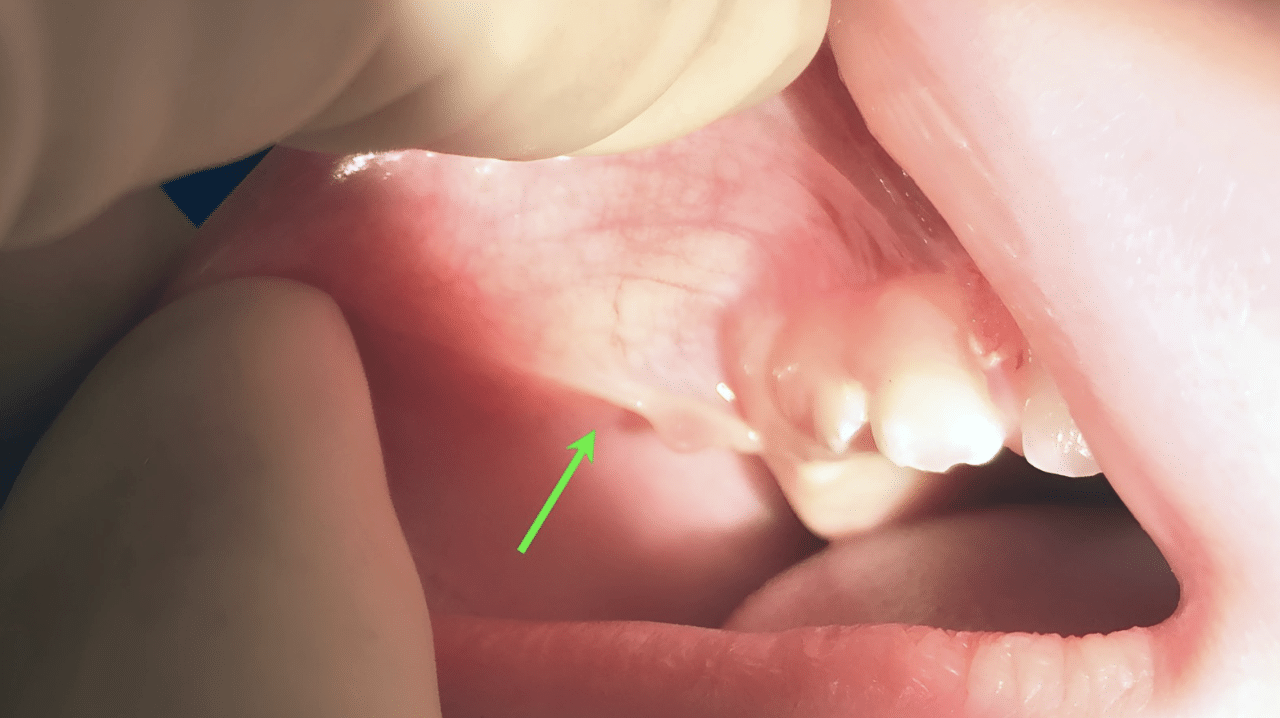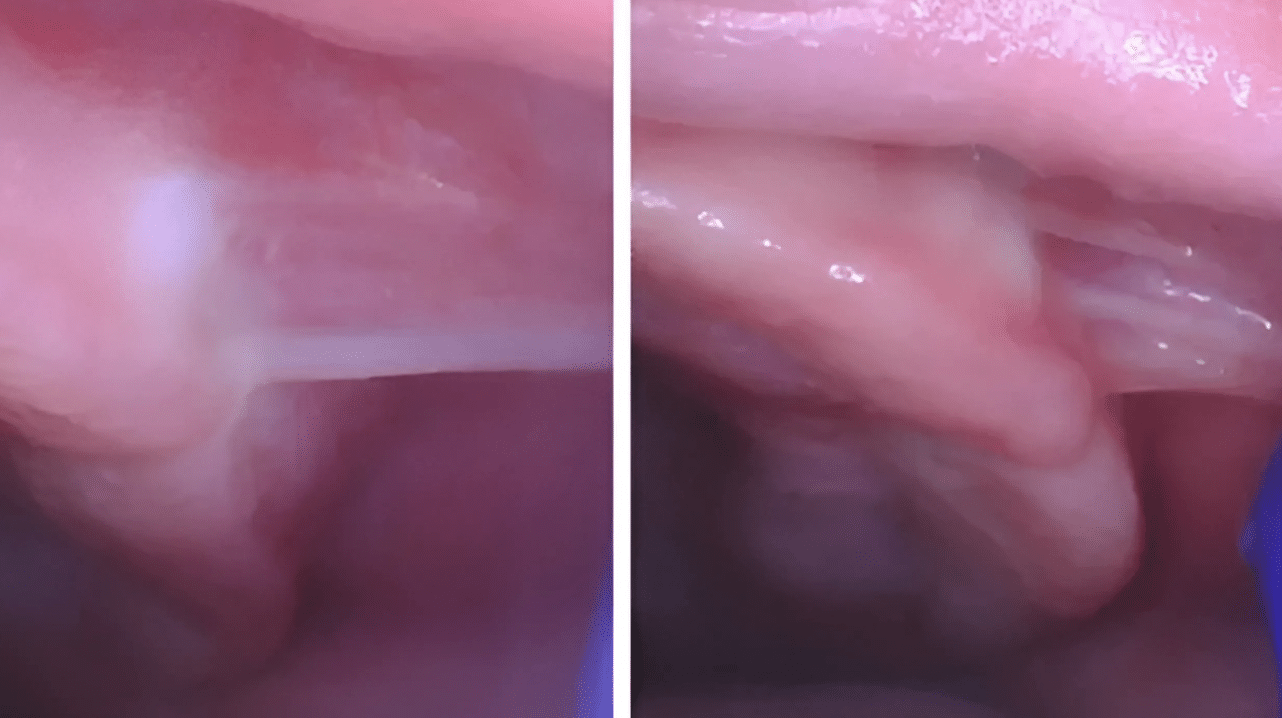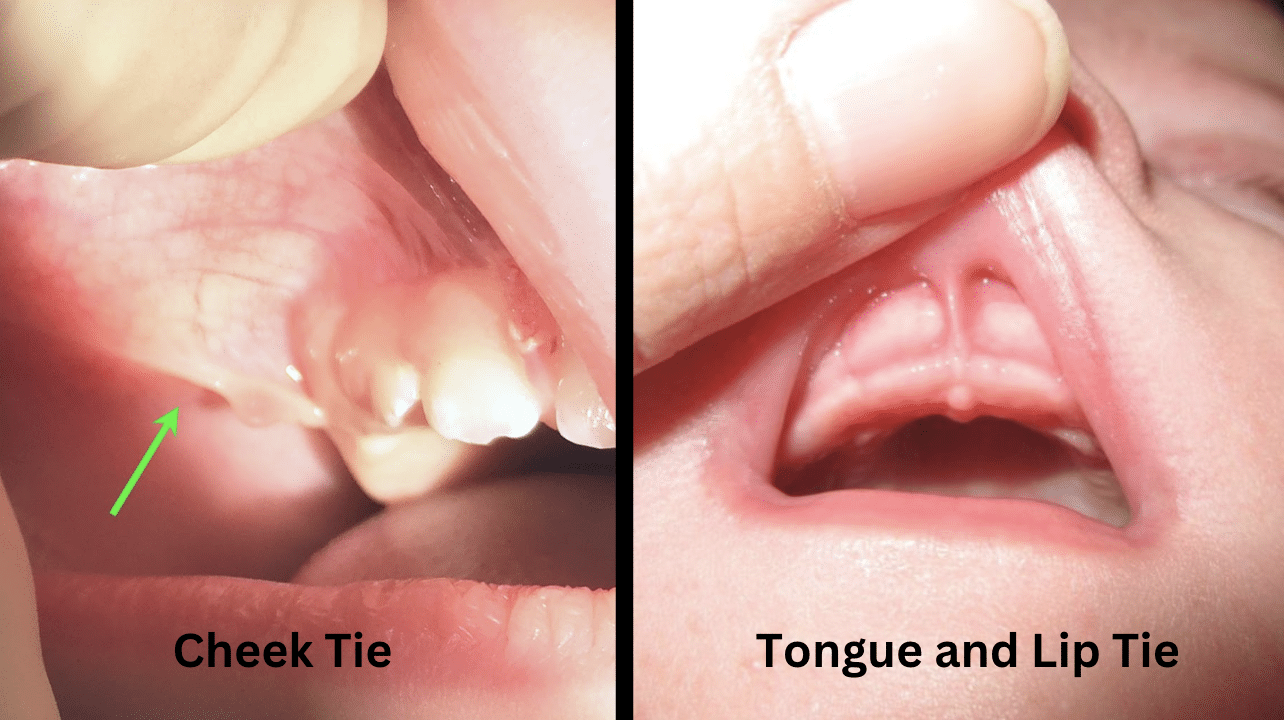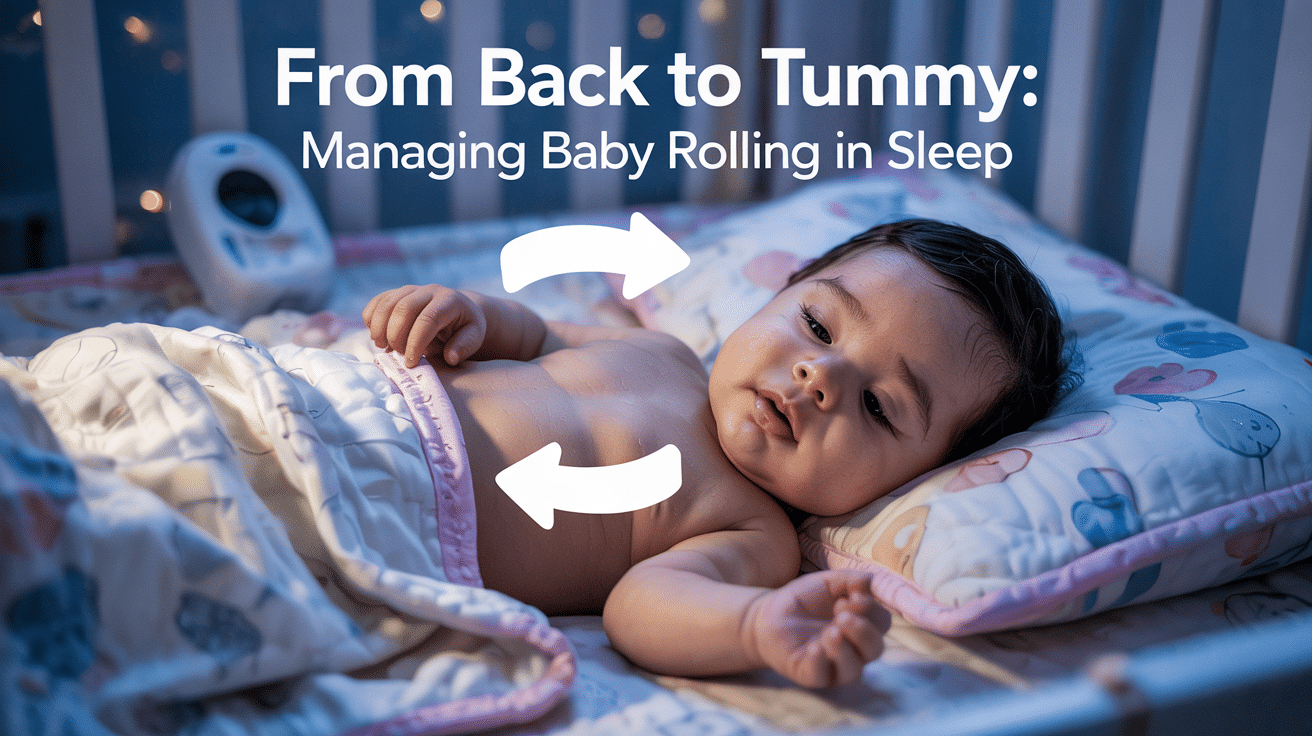
Cheek ties occur when the tissue connecting a baby’s cheek to the gum is unusually tight or short. This less-familiar oral restriction can affect feeding and development.
Most parents know about tongue and lip ties, but cheek ties often go unnoticed. These restrictions happen when the buccal frenum (the tissue inside the cheek) is too tight.
Were you aware that the human mouth contains around 20 different muscle groups, all working together to help babies feed effectively?
Babies with cheek ties may struggle during feeding, showing discomfort or making clicking sounds. They might have difficulty creating a proper seal while nursing.
Early detection matters for proper treatment. Healthcare providers can assess the severity and recommend appropriate interventions.
Treatment options vary from “wait and see” approaches to surgical release, depending on how significantly the tie affects the baby.
Disclaimer: Images are for informational purposes only and may not reflect every case. Always consult a healthcare professional for diagnosis and treatment.
What Is a Cheek Tie in a Baby?
Ever wondered why your baby struggles while feeding? A cheek- tie might be the culprit! This condition occurs when the tissue connecting your baby’s cheek to the gum (buccal frenulum) is abnormally tight or restricted.
Have you noticed your little one having trouble forming a proper latch? Unlike the more commonly discussed tongue or lip ties, cheek ties often go undiagnosed despite significantly affecting feeding comfort.
The buccal frenulum normally allows proper cheek movement for sucking and swallowing. When restricted, it can interfere with creating the vacuum needed for effective milk transfer.
Are you concerned about your baby’s feeding patterns? Ask your pediatrician about examining for possible oral restrictions, including cheek ties.
What feeding difficulties have you observed in your baby?
Causes of Cheek Ties in Babies
Cheek ties in babies primarily stem from incomplete tissue separation during facial development in the womb.
Environmental factors during pregnancy, including certain medications or nutritional deficiencies, may also contribute to their formation.

1. Congenital Development
Cheek ties occur during fetal growth when oral tissue doesn’t properly separate. This condition, known as buccal ties, affects the connective tissue between the cheeks and gums.
Formation occurs early in pregnancy as facial structures develop. When normal tissue separation doesn’t happen, these bands remain attached, limiting mouth movement.
2. Genetic Predisposition
Family history plays a significant role in cheek tie occurrence. Research suggests certain genetic factors increase the likelihood of this oral condition.
Some families show patterns across generations, though specific genetic markers remain under study. Children with relatives who had oral restrictions may need closer monitoring.
3. How It’s Located?
Most cheek ties are found when babies show feeding difficulties. Signs include poor latch, milk leakage, or constant fussiness during meals.
Pediatricians may spot them during regular checkups by examining the inside of the baby’s mouth. Early detection allows for timely intervention and improved feeding outcomes.
Cheek Ties in Babies: What Parents Should Know?

Cheek ties (buccal ties) can cause feeding challenges for babies. These oral restrictions happen when the tissue connecting the cheeks to the gums is too tight.
Parents may notice their baby struggles to form a proper seal while nursing. This often leads to milk leaking from the corners of their mouth during feeds.
Babies with cheek ties might make noticeable sounds while eating. They can become upset during feeding sessions and show signs of discomfort.
Weight gain concerns may arise as these babies often cannot transfer milk effectively. The restricted cheek movement can make it difficult for them to create the necessary suction.
If you notice these signs, it is important to consult with a healthcare provider who specializes in oral function. Early identification can help address feeding issues and support your baby’s growth and development.
Cheek Tie Effects on Feeding and Growth
Cheek ties (buccal ties) are restrictive tissue connections between cheeks and gums that can significantly impact infant development. These oral restrictions often cause latching difficulties during feeding, potentially leading to inadequate weight gain and frustration for both babies and parents.
As children develop, limited cheek mobility may hinder proper speech formation, sometimes necessitating therapy. The restricted areas between cheek and gum can trap food particles, increasing cavity risks and complicating daily oral hygiene.
Fortunately, early identification by healthcare professionals enables timely intervention. Simple surgical release procedures frequently result in immediate improvements in feeding comfort and efficiency.
Parents should remain alert for warning signs, such as feeding difficulties, persistent fussiness, and unusual oral movements that might indicate a cheek tie.
Prompt attention to these symptoms can prevent longer-term developmental challenges.
Diagnosing a Cheek Tie in Babies

Cheek ties in babies require proper medical assessment for an accurate diagnosis. Parents who notice feeding difficulties should promptly seek professional help.
The first step is typically a thorough examination by a pediatrician or lactation consultant. These professionals check for restricted oral movement during feeding sessions.
For complex cases, pediatric dentists bring specialized knowledge about oral structures. ENT specialists may also evaluate how these restrictions affect swallowing and breathing patterns.
The diagnostic process includes a careful visual examination of the baby’s mouth. Healthcare providers look for tissue connections between the cheek and gum that limit movement.
Symptom assessment plays a crucial role in diagnosis. Warning signs include clicking sounds during feeding, milk leakage from the mouth, and constant fussiness while nursing.
Early identification leads to better outcomes. Most babies with proper treatment go on to develop normal feeding patterns and oral function.
Treatment Options for Cheek Ties
Cheek ties, or buccal ties, are tissue connections inside the mouth that can sometimes restrict movement. When these ties cause feeding issues or discomfort, treatment may be necessary.
For mild cases without symptoms, healthcare providers often suggest watching and waiting. Regular check-ups help track any changes that might require intervention.
When treatment is needed, a simple procedure called a frenectomy can help. This quick treatment uses special scissors or a laser to release the tight tissue. Most patients experience minimal discomfort.
After the procedure, specific mouth movements and stretches help prevent the tissue from reattaching. These exercises are crucial for successful healing.
Parents should work closely with healthcare providers to determine if treatment is necessary. Each child’s situation is unique and requires personalized care approaches based on symptoms and severity.
Cheek Tie Baby vs. Tongue and Lip Tie: What’s the Difference?

Cheek ties typically cause different symptoms than tongue or lip ties, with babies showing difficulty maintaining suction while feeding.
While tongue ties often present with clicking sounds and poor latching, cheek ties may cause milk leakage and frustration during feeding as babies struggle with the proper cheek movement needed for efficient nursing.
| Type | Location | Affected Movement | Feeding Impact | Common Attention |
|---|---|---|---|---|
| Cheek Tie | Inside the cheek, where it connects to the gums | Limits lateral mouth movement | May cause poor latch, sucking blisters, or milk dribbling | Less commonly diagnosed |
| Lip Tie | Between upper lip and gums | Restricts upper lip mobility | Can make flanging the lip during latch difficult | Increasing awareness in parents and professionals |
| Tongue Tie | Under the tongue (lingual frenulum) | Restricts tongue extension and elevation | Often leads to ineffective sucking, poor weight gain | Most commonly identified and treated |
When to Seek Help for a Cheek Tie Baby?

Reach out for help when you notice your baby struggling with feeding or showing signs of discomfort during meals. Getting a professional assessment early can make a significant difference in your baby’s comfort and development.
1. Red Flags to Look For
Watch for feeding troubles, such as a shallow latch or milk leaking from your baby’s mouth. Also, notice if your baby seems fussy during feeds or has slow weight gain.
Pain during nursing or bottle feeding can suggest a cheek tie issue. Check for dimpling of the cheeks or limited mouth opening when your baby cries.
2. How Early Intervention Can Help
Quick action can prevent long-term feeding problems. Early treatment often means simpler fixes and less stress for both the baby and the parents.
Getting help sooner supports proper oral development and may prevent speech issues later.
3. Importance of Working with Professionals
Seek care from experts who know about oral ties. Look for a team approach with a lactation consultant and pediatric dentist.
The right professionals can offer a full check and create a care plan just for your baby. Follow-up visits help track progress and adjust treatment as needed.
Final Words
Looking back at what we’ve covered, cheek ties can impact feeding and comfort for many babies, with signs including difficulty latching and facial tension.
Early detection significantly affects treatment outcomes, so remember the assessment methods we discussed.
Parents know their children best, so if something seems wrong during feeding, don’t hesitate to seek professional advice from healthcare providers who can offer proper diagnosis and treatment options.
With proper care and attention, babies with cheek ties can thrive. Treatment approaches vary based on severity and individual circumstances.
Support groups provide valuable resources for families going through similar experiences, so stay informed and connected throughout your baby’s care ride.
If you’re interested in more informational content on mothers and babies, feel free to click here and explore other blogs that you might enjoy.




















